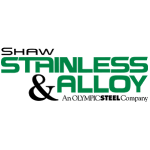M30/M50 Crash Test Results
Project Details
- Project Year
- 2023
Crash-Rated Bollards are designed to stop various types of vehicles up to specific speeds from penetrating desired secure perimeters. These crash-rated bollards have a ratings system originally developed by the Department of State in 1985, then revised up until 2003. This was known as the K-Ratings system. The crash-rated bollard, or barrier, was given an “L” rating certification based on the distance a 15,000 lb. vehicle traveled beyond the bollard or barrier (up to an allowable distance without failing).
Although the DoS system is still commonly referred to today, the more recently recognized ASTM crash-ratings system, which has essentially replaced the older K-Ratings system is usually set as the current standard. The new M-Ratings System is overseen by the (ASTM) American Society for Testing Materials. The difference is how far the various weighted vehicles penetrates beyond the crash-rated bollards / barriers. This is now known as a “P” rating, with P1 being the least penetration and P3 being the greatest allowable penetration. Completely opposite of the previous DoS “L” penetration with L3 being the lowest and L1 being the most allowable penetration.
Crash ratings of bollards are determined by three factors:
- Weight of the vehicle.
- Speed the vehicle is traveling.
- How far the vehicle penetrates beyond the crash-rated bollard.





